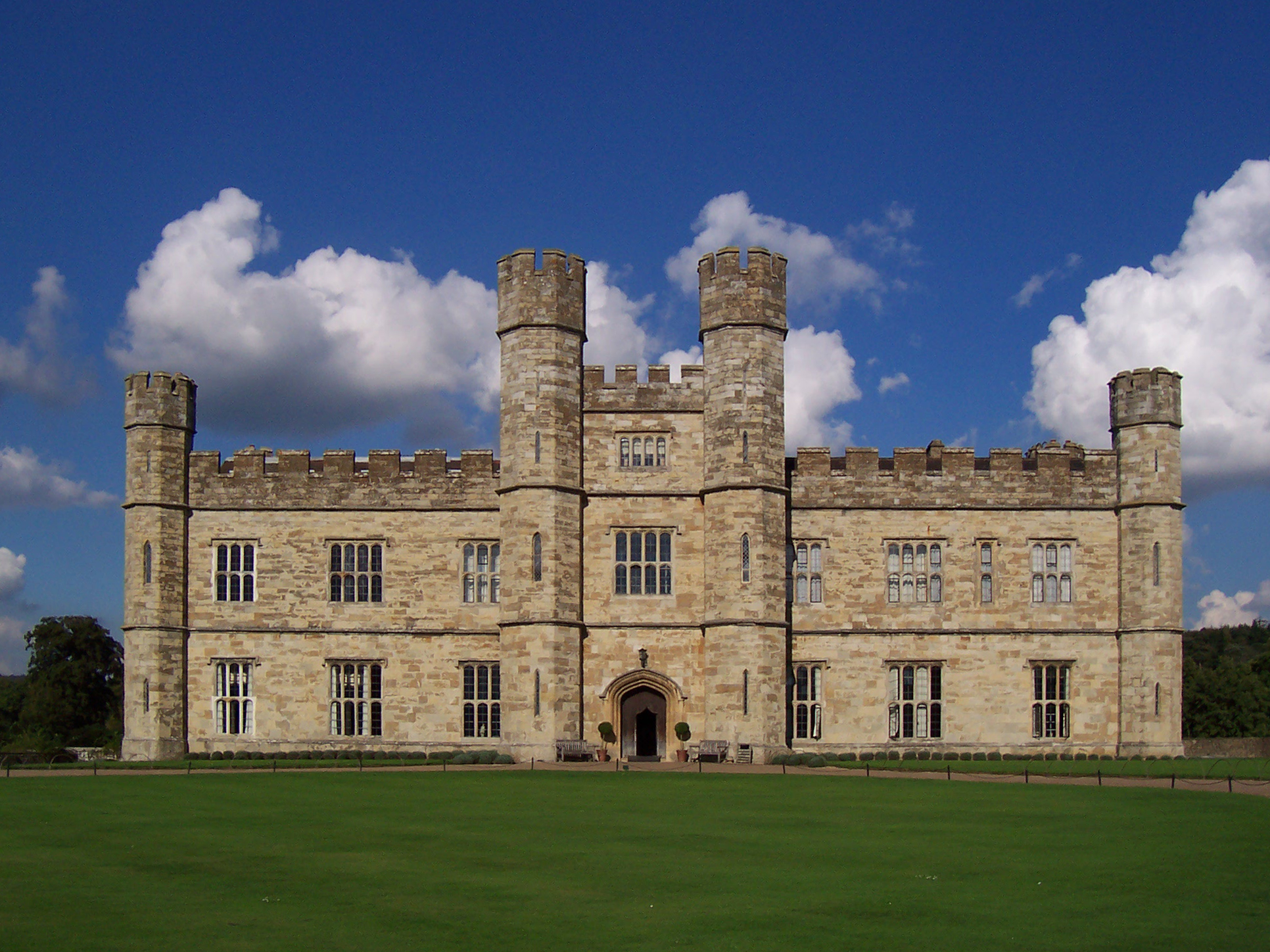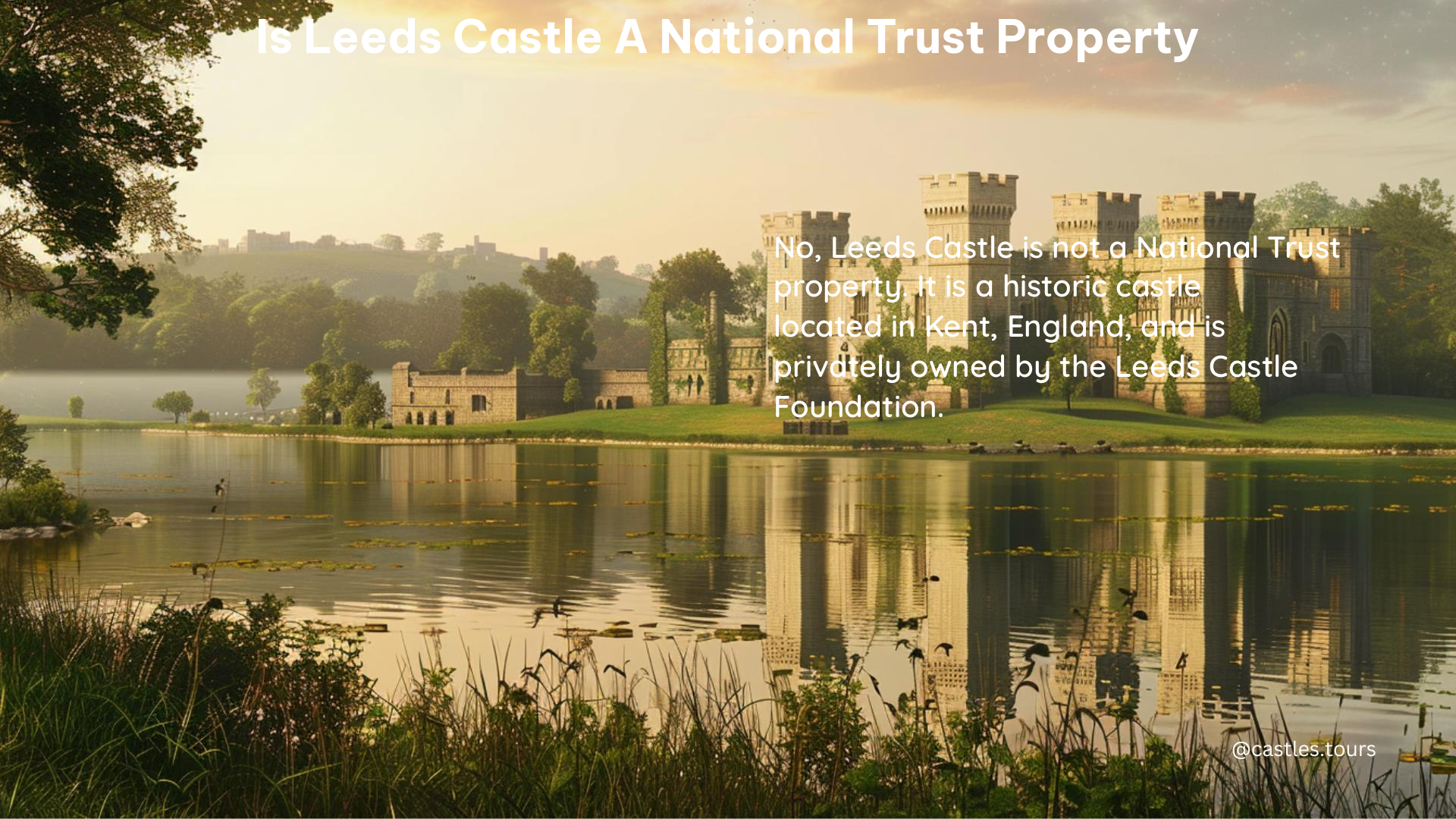No, Leeds Castle is not a National Trust property. It is maintained by the Leeds Castle Foundation and has been open to the public since 1976.
What is Leeds Castle?

Leeds Castle is a historic castle located in Kent, England. It is situated on two small islands in a lake formed by the River Len, just to the southeast of the village of Leeds. The castle has a rich history, dating back to the 9th century when it was a royal residence for Saxon kings.
History of Leeds Castle

The castle has a long and fascinating history. Here are some key facts about the history of Leeds Castle:
- 9th Century: The first recorded mention of Leeds Castle was in 857 AD, when it was a royal residence for Saxon kings.
- 11th Century: After the Norman Conquest, the castle was given to the de Crevecoeur family, who rebuilt and expanded it.
- 12th Century: The castle was acquired by King Henry I, who used it as a royal residence.
- 13th Century: King Edward I and his wife, Queen Eleanor, made significant additions to the castle, including the construction of the famous “Gloriette” building.
- 14th-15th Centuries: The castle passed through several noble families, including the Badlesmeres and the Fiennes.
- 16th Century: The castle was acquired by Henry VIII, who used it as a hunting lodge.
- 17th-19th Centuries: The castle was owned by various aristocratic families, including the Culpepers and the Fairfaxes.
- 20th Century: In 1926, the castle was purchased by Lady Baillie, who carried out extensive renovations and opened it to the public in 1976.
Ownership and Management of Leeds Castle
As mentioned earlier, Leeds Castle is not a National Trust property. Instead, it is owned and managed by the Leeds Castle Foundation, a charitable organization that was established in 1974.
The Leeds Castle Foundation is responsible for the maintenance, preservation, and operation of the castle and its grounds. The foundation is funded through a combination of visitor admission fees, donations, and other sources of revenue.
Visiting Leeds Castle
Leeds Castle is a popular tourist attraction, attracting over 500,000 visitors each year. The castle and its grounds offer a wide range of activities and attractions for visitors to enjoy, including:
- The Castle: Visitors can explore the castle’s various rooms and buildings, including the Gloriette, the Maiden’s Tower, and the Culpeper Tower.
- The Gardens: The castle’s grounds feature beautiful gardens, including the Culpeper Garden, the Woodland Garden, and the Lady Baillie Garden.
- The Maze: The castle is home to a famous hedge maze, which is a popular attraction for visitors.
- The Falconry Centre: The castle has a Falconry Centre, where visitors can watch demonstrations of birds of prey.
- The Punting Lake: Visitors can take a boat ride on the castle’s lake, which is a popular activity during the summer months.
Facilities and Amenities at Leeds Castle
In addition to the castle and its grounds, Leeds Castle also offers a range of facilities and amenities for visitors, including:
- Accommodation: The castle has a range of accommodation options, including a luxury hotel, self-catering cottages, and camping facilities.
- Dining: The castle has several dining options, including a fine dining restaurant, a café, and a pub.
- Events: The castle hosts a range of events throughout the year, including concerts, festivals, and special exhibitions.
- Accessibility: The castle and its grounds are largely accessible to visitors with disabilities, with a range of facilities and services available to support their needs.
Conclusion
In conclusion, while Leeds Castle is not a National Trust property, it is a historic and well-preserved castle that is open to the public and managed by the Leeds Castle Foundation. With its rich history, beautiful gardens, and range of activities and amenities, Leeds Castle is a must-visit destination for anyone interested in exploring the history and heritage of England.
